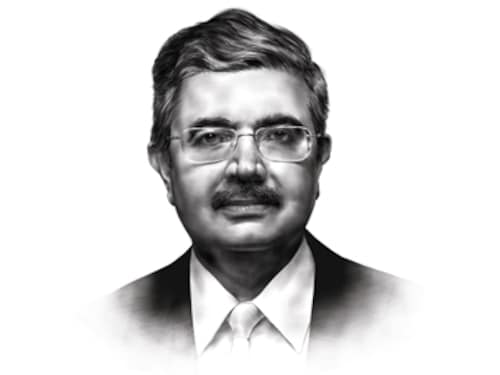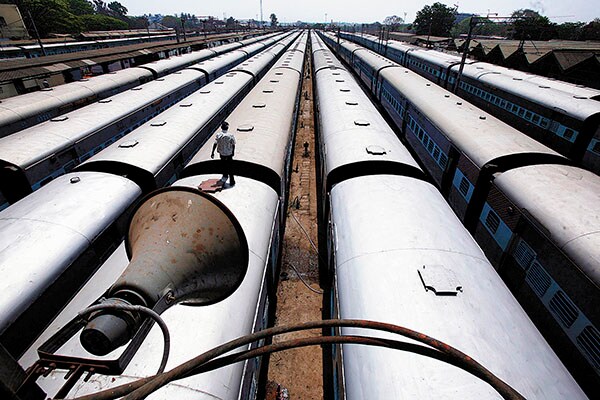It's a marathon, not a sprint: Uday Kotak
Optimism continues to fuel the Indian economy as it takes one measured step at a time, often ahead of the rest of the world


The period between Thanksgiving and Christmas is a time for purchasing gifts, planning a year-end holiday, and last, but not the least, introspection. Let us step back and consider the significant changes we saw across the world. The most important among those is the dramatic change in commodity prices, in particular oil and energy. We saw a drop of more than 50 percent, and this has changed the dynamics for the world.
We are seeing the world become a one-engine game—the progressing US economy. However, other countries like Germany and Japan have significantly slowed down. China, too, is not firing at the pace it did earlier. The unexpected devaluation of the yuan and the steep correction of the Chinese bourses that followed, in August, impacted global stock and currency markets. Practically every market experienced this pain. We, too, were not spared, proving that the Indian economy cannot remain insulated from global events. The announcement of penalising market participants for taking short positions to stymie the fall sent shivers in the region. Laissez faire, clearly, is not practiced by the Dragon.
Setting up of the New Development Bank (NDB), (formerly known as BRICS Development Bank), as an alternative to the existing American and European-dominated World Bank and International Monetary Fund proves that emerging nations have come of age and want to have a decisive say in world finances.
News headlines on the Greek referendum and the Russia-Ukraine conflict also made the world anxious. We had a soothing factor as well. The US-Iran nuclear deal put to rest the fear of Iraq-like aggression by the ‘World Police’. The Syrian refugee crisis and Paris attacks brought sparring world leaders—Vladimir Putin, Barack Obama and leaders of Nato countries—together to fight the Isis.
In my 2015 New Year message to my colleagues, I had shared the view that India will stand to benefit from a slower commodity price cycle in its macroeconomic aspects. In fact, India’s current account numbers, inflation and fiscal deficit numbers have turned positive from these global factors. Macroeconomic India looked better in 2015.
The IMF has capped India’s GDP to 7.3 percent and the RBI has revised its target from 7.6 percent to 7.4 percent. Viewed against the backdrop of the US and Eurozone’s growth rate of sub-1 percent and a slowing Chinese economy at 6.5 percent, the Indian GDP number of 7 percent-plus looks attractive. But at the same time, due to deflationary pressures, it will be difficult for India to up its momentum. It is for the first time that I have known Indian nominal GDP to be below real GDP.
Monsoon played truant this year and, being an essentially agrarian economy, we can’t discount the importance of rains. India has to do a lot more in terms of structural acts to get the growth engine firing faster. It is here, I think, that we have a very significant challenge and opportunity in 2016.
The Narendra Modi-led NDA has addressed several structural issues in 2015. Some of which are: Foreign equity in rail infrastructure without limit, foreign equity cap in insurance and pension sectors increased to 49 percent, nod for IPOs/FPOs by banks to raise funds as long as government equity remains 52 percent or over, nod for real estate and infrastructure investment trusts with tax benefits, and Cabinet nod for PM’s 100 Smart Cities Project, etc. The Indian economy will reap the benefits in the coming years.
We have clearly moved from the policy paralysis and gloomy environment that we saw two years ago to a positive sentiment. By and large, corporate earnings have been in line with street expectations. Investors, retail and institutional, have responded well to the few IPOs that we saw this year. However, corporates are still seen holding back from committing to capex expansion, which is what will eventually push the wheels of the economy including employment generation.  Image: Jagadeesh N.V / Reuters
Image: Jagadeesh N.V / Reuters
The Modi government has allowed foreign equity in rail infrastructure without limit. The economy will reap its benefits in the coming years
There are some other challenges well. Parliament needs to push the new Goods and Services Tax (GST) regime before the new financial year begins in April. Land acquisition remains a sore point with industry and lack of consensus among political parties is not helping in boosting investor mood fiscal prudence needs to come back on track, which could lift global sentiments on India with a fiscal deficit of 3 percent of GDP soon to promote ease of doing business, action is awaited to club together some 35 central laws pertaining to labour into just four new legislations.
The list could go on and what is bad is that we have a problem of impasse in Parliament. The legislature is being used to drive political agenda at the cost of holding progress to ransom.
Now, moving from macro and fiscal issues to markets. The Sensex has come down by 5,000 points in about nine months. I am not too worried about this. We should note that it had galloped from around 18,000 to around 30,000 with the change in guard at the Centre last year. Though fundamentals have changed for the better in the last 18 months, the rise in Sensex was largely sentiment driven. We all know markets tend to discount factors way ahead of their time.
Events and factors like the Fed interest rate hike, quantitative easing in Eurozone and MSCI reallocation of portfolio will keep stock markets on tenterhooks and volatile. But this will be shortlived. In the longer term, the fundamentals will drive the Sensex. For India’s overall economic welfare, there are no two opinions to say that NDA’s third budget in February 2016 needs to be ground breaking.
Our economy may not appear a great snapshot at the moment, but is certainly a movie to watch out for, and we all know that Bollywood movies tend to be long.
I am of the view that the Indian marathon is playing its own way. I see India having a phenomenal future over the next decade.
First Published: Jan 20, 2016, 06:28
Subscribe Now